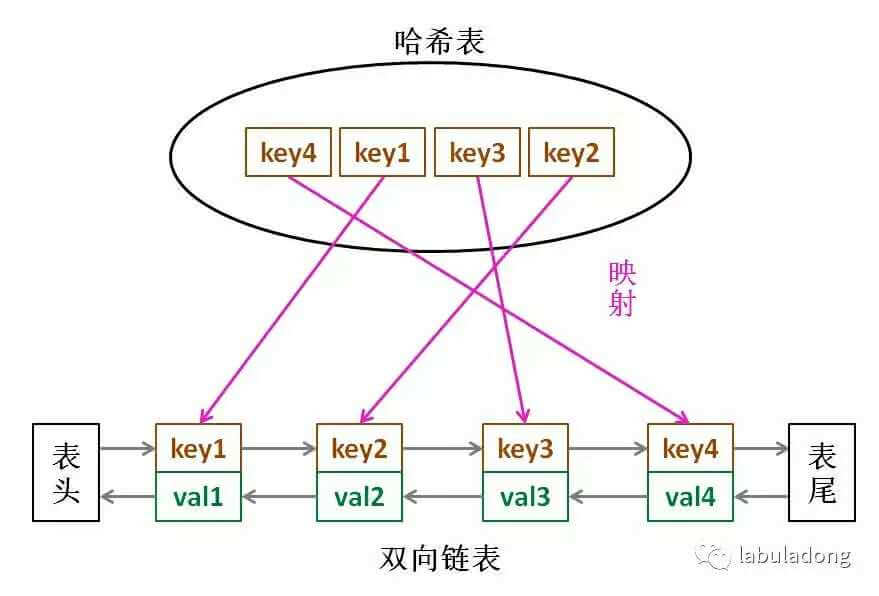算法描述
LRU实际上是设计一个数据结构,有如下要求:
- 包含容量capacity和当前元素数量size
- 包含插入方法put和获取get
- 时间复杂度为O(1);
算法设计
一般来说通过两个数据结构来实现LRU机制,即
- 哈希表:用于存取【鍵-节点】对
- 双向链表:用于存取【键-值】对,尾节点为最新加入的节点,头节点的后一结点为LRU节点

struct Node{int key,value;Node *pre,*next;Node(int _k,int _v):key(_k),value(_v),pre(nullptr),next(nullptr){}};class LRUCache {const int MAXSIZE=3001;Node* head;Node* tail; /* for tail insertion method */vector<Node*> cache_;int capacity;int size;public:LRUCache(int c):size(0),capacity(c) {head=new Node(-1,-1);tail=head;cache_.resize(MAXSIZE,nullptr);}int get(int key) {if(cache_[key]==nullptr){/* not existed */return -1;}else{/* existed */Node* cur=cache_[key];/* if cur is tail, ignore update*/if(cur!=tail){/* release from original position */cur->pre->next=cur->next;cur->next->pre=cur->pre;/* update position to tail */tail->next=cur;cur->pre=tail;cur->next=nullptr;tail=cur;}return cur->value;}}void put(int key, int value) {if(get(key)==-1){/* existed */if(size<capacity){size++;}else{/* delete the head->next node */Node *popNode=head->next;if(popNode==tail){tail->next=nullptr;tail->pre=nullptr;head->next=nullptr;tail=head;}else{head->next=popNode->next;popNode->next->pre=head;}popNode->next=nullptr;popNode->pre=nullptr;/* important! remove it from cache */cache_[popNode->key]=nullptr;delete popNode;}/* create new node (tail insertion)*/Node *newNode=new Node(key,value);cache_[key]=newNode;tail->next=newNode;newNode->pre=tail;tail=newNode;}else{cache_[key]->value=value;}}};

